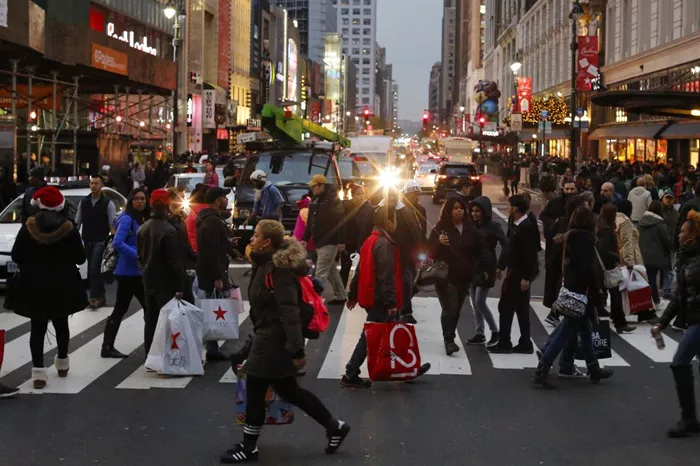In modern consumer societies, the rhythm of daily life often dictates patterns of shopping behavior. From grocery runs to major purchases, individuals and families plan their shopping trips based on convenience, work schedules, and habits. However, amidst these routines, certain days of the week stand out as particularly busy for retail establishments. This article delves into the phenomenon of the busiest shopping day of the week, examining factors such as consumer trends, economic influences, and the evolution of shopping habits over time.
Introduction
Shopping is a fundamental aspect of daily life, influenced by economic, social, and cultural factors. Understanding the busiest shopping day of the week provides insights into consumer behavior, retail strategies, and the broader dynamics of commerce in contemporary society. This article explores the data, trends, and theories surrounding shopping patterns across different days of the week, shedding light on why certain days emerge as peak shopping days.
The Evolution of Shopping Habits
Historical Perspectives on Shopping
Throughout history, shopping has evolved from localized markets and trade routes to modern retail environments. In agrarian societies, markets often operated on specific days, reflecting agricultural cycles and communal gatherings. With urbanization and industrialization, permanent retail establishments emerged, offering convenience and a wider range of goods.
Industrialization and Urbanization
During the Industrial Revolution, urban centers saw the rise of department stores and shopping districts, catering to growing populations and expanding consumer demand. The establishment of fixed wages and standardized workweeks further shaped shopping patterns, influencing when and how individuals engaged in retail transactions.
Factors Influencing Shopping Patterns
Economic Influences
Economic factors play a significant role in shaping consumer behavior and the busiest shopping day of the week. Paydays, for example, often coincide with increased spending as consumers have disposable income. Retailers may strategically align promotions and sales events to capitalize on these periods of heightened economic activity.
Social and Cultural Influences
Social norms and cultural practices also influence shopping habits. Weekends, traditionally viewed as leisure time, tend to see higher foot traffic in retail stores as individuals engage in recreational shopping or household errands. Conversely, weekdays may be characterized by more targeted and time-sensitive shopping trips.
Analyzing Consumer Behavior
Data-Driven Insights
Analyzing consumer behavior through data analytics provides valuable insights into shopping trends. Retailers utilize sales data, foot traffic patterns, and customer demographics to optimize staffing, inventory management, and marketing strategies. Understanding peak shopping days allows businesses to enhance operational efficiency and customer satisfaction.
Seasonal Variations
Seasonal factors, such as holidays and back-to-school periods, significantly impact shopping patterns. Retailers experience surges in demand during peak seasons, prompting strategic planning and resource allocation. Black Friday and Cyber Monday, for instance, are renowned for their substantial sales volumes and consumer participation.
Retail Strategies and Marketing Tactics
Promotional Campaigns
Retailers employ various promotional tactics to attract customers on the busiest shopping day of the week. Discounts, coupons, and limited-time offers incentivize purchases and drive traffic to brick-and-mortar stores and online platforms. Effective marketing campaigns leverage consumer psychology and purchasing behavior to maximize sales opportunities.
Omnichannel Retailing
The advent of e-commerce has transformed shopping dynamics, enabling consumers to shop anytime, anywhere. Omnichannel retail strategies integrate physical and digital channels, providing seamless shopping experiences across platforms. Retailers leverage digital marketing, personalized recommendations, and mobile applications to engage with tech-savvy consumers.
See Also: What Is The Cheapest Day Of The Week To Travel On Amtrak?
Case Studies and Examples
Case Study: Retail Sector Analysis
Examining specific retail sectors offers insights into sector-specific shopping behaviors and market trends. Grocery retailers, for instance, experience peak traffic on weekends as families stock up on essentials and fresh produce. Specialty retailers may see fluctuations based on product launches, seasonal trends, and consumer preferences.
Global Perspectives
Comparative analysis of international shopping trends highlights regional variations and cultural influences. In Asia, for example, shopping festivals like Singles’ Day in China attract millions of online shoppers, surpassing global sales records. Understanding global retail dynamics informs strategic decision-making and market expansion initiatives.
Future Trends and Innovations
Technological Advancements
Advancements in technology, such as artificial intelligence and predictive analytics, revolutionize retail operations and customer engagement. Machine learning algorithms anticipate consumer preferences and personalize shopping experiences, enhancing customer loyalty and revenue generation. Virtual reality and augmented reality redefine the concept of immersive retail environments.
Sustainability and Ethical Shopping
Growing consumer awareness of environmental sustainability and ethical sourcing influences purchasing decisions. Eco-friendly products, fair trade practices, and corporate social responsibility initiatives resonate with socially conscious consumers. Retailers adopt transparent supply chains and green technologies to meet evolving ethical standards.
Conclusion
The busiest shopping day of the week reflects a convergence of economic, social, and cultural influences on consumer behavior. Understanding these dynamics enables retailers to optimize operational strategies, enhance customer experiences, and navigate competitive market landscapes. As shopping habits continue to evolve with technological innovations and shifting societal norms, the quest to predict and capitalize on peak shopping days remains integral to retail success in a dynamic global economy. By analyzing historical trends, leveraging data-driven insights, and embracing innovation, businesses can adapt to changing consumer preferences and drive sustainable growth in the retail industry.

